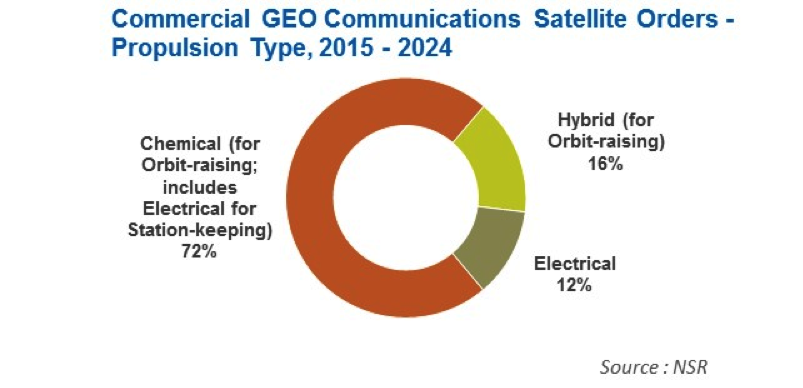Versatility in Satellite Manufacturing
by Carolyn Belle, NSR
A peek into the RFPs issued to prime satellite manufacturers over the
last year quickly shows how far the industry has come from the
cookie-cutter satellites of past decades. Similarly, manufacturer
portfolios have developed into a diverse set of options that enable an
operator to tailor the spacecraft to their unique demands more than ever
before.
In some ways this is the natural evolution of a market that only
began in earnest 30 years ago. Yet the fact remains that end-user
markets coupled to CAPEX determine commercial satellite design, and it
is these factors that are currently driving versatility in the satellite
marketplace. Traditionally, end-user markets have been stable enough to
satisfy the operator and investors that a satellite designed today,
launched in 3 years, and retired in 18-20 years would be able to address
a profitable market for the duration of its service life. Today the
story has changed. Given the rate of global development, operators now
face both rising competition and declining certainty in the longevity of
target markets, leading to fear of trapped capacity as demand shifts
regionally or to new applications.

As a result of this uncertainty, NSR’s Satellite Manufacturing and
Launch Services, 5th Edition established a
convergence between manufacturers’ provision of a broad tool-belt of
capabilities with operator willingness to adopt non-traditional designs.
A trend is emerging for operators to blend technologies in unique ways
and co-locate different payloads to address multiple markets with a
single satellite. During the 2015-2024 period, 44% of commercial
GEO communications satellites are expected to adopt HTS or hybrid
HTS/FSS payloads. Over the same years, 28% of commercial GEO
communications satellites will use hybrid chemical/electrical or full
electrical propulsion in lieu of the traditional chemical-only.

Even as these technologies mature, the next phase of
capability diversification has already emerged as on-board flexibility
– an overarching concept that includes components already developed but
rarely employed as well as entirely novel technologies. On-board
flexibility, in the form of steerable/reconfigurable beams to redirect
coverage, multi-point amplifiers to reallocate power, or on-board
processors to dynamically manage traffic, has become more valuable in
light of the challenge to ensure high fill rates throughout a satellite
lifetime. 2015 contracts have already highlighted these trends: the
first commercial GEO communications contract of the year, between New
York Broadband LLC and Boeing, included steerable beams and
reconfigurable power. A mere month later, SES contracts with Airbus
Defence & Space for SES-14 and SES-16 each included an element of
on-orbit flexibility (digital processor and steerable beams,
respectively).
This growth of on-board flexibility and combination of many flexible
sub-systems and components into a single highly adaptable satellite
could become an important turning point in design, transitioning from
ground customization to in-orbit customization. Procurement of the first
Quantum satellite between Eutelsat and Airbus Defence &
Space/SSTL is expected later this year, promising to take one step
closer to such a software-defined satellite.
Despite widespread interest, the key stumbling block of the
flexible marketplace remains the tradeoff of price with capabilities.
Manufacturers have found creative ways to introduce new tools and
flexible components at low or no added cost, but many feasible
capabilities lay beyond today’s operator-acceptable price points. While
previous reticence to pay a premium for added flexibility could be
approaching a turning point, cost will remain the main
complication moving forward.
Bottom Line
As operators continue to seek ways to ensure their satellites remain
relevant long after design and launch, manufacturers will be challenged
to provide ever more options and a balance of ground and space
customization – at the right price. The ongoing exploitation of HTS
payloads and electric/hybrid propulsion, alongside growing prevalence of
on-board flexibility, will build the foundation for a flexible
architecture of assets that can be compiled and recompiled in different
ways to address shifting demand and opportunities. Operators who invest
in such capabilities will be better equipped to adapt to changing
markets and new competition.
| |